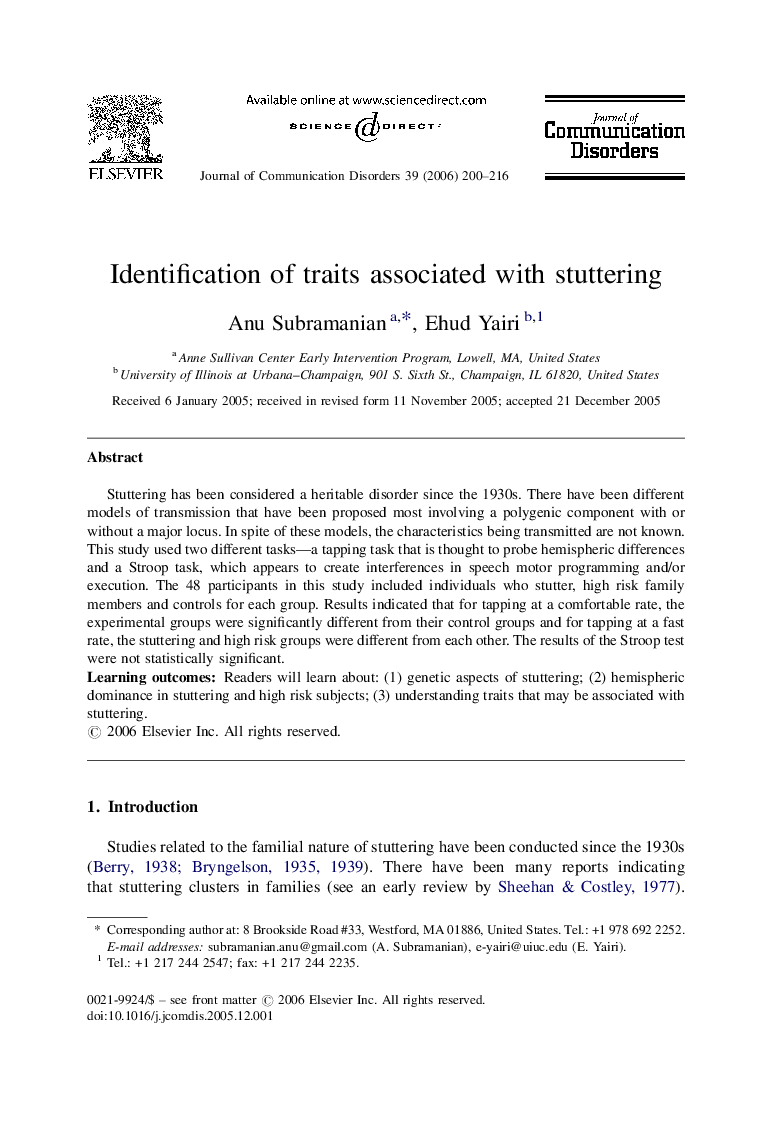| Article ID | Journal | Published Year | Pages | File Type |
|---|---|---|---|---|
| 911123 | Journal of Communication Disorders | 2006 | 17 Pages |
Stuttering has been considered a heritable disorder since the 1930s. There have been different models of transmission that have been proposed most involving a polygenic component with or without a major locus. In spite of these models, the characteristics being transmitted are not known. This study used two different tasks—a tapping task that is thought to probe hemispheric differences and a Stroop task, which appears to create interferences in speech motor programming and/or execution. The 48 participants in this study included individuals who stutter, high risk family members and controls for each group. Results indicated that for tapping at a comfortable rate, the experimental groups were significantly different from their control groups and for tapping at a fast rate, the stuttering and high risk groups were different from each other. The results of the Stroop test were not statistically significant.Learning outcomesReaders will learn about: (1) genetic aspects of stuttering; (2) hemispheric dominance in stuttering and high risk subjects; (3) understanding traits that may be associated with stuttering.
